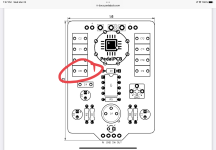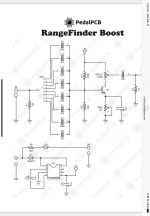mkstewartesq
Well-known member
So I finally got around to building this kit, which was one of the first I bought back when I thought "uf" always meant electrolytic capacitor and "nf" always meant film box (didn't know yet that there was a conversion to be done between uf and nf, etc.). Long story short, slot C8 is 1uf, and I bought a 1uf electrolytic cap rather than a box cap, and I have no film box caps with that value/equivalent value in nf.. I understand that in a pinch an electrolytic cap can be used here (not ideal) but obviously polarity matters - and since this cap is between a rotary switch and the rest of the circuit, I have no idea which side should be positive and the relationship to/interplay with the rotary switch is a new one to me so I'm not sure how to read the schematic to solve for this one.
Can someone help, please, by letting me know by reference to the board layout where the positive lead should go on C8? Schematic and board layout attached.
Thank you.
Can someone help, please, by letting me know by reference to the board layout where the positive lead should go on C8? Schematic and board layout attached.
Thank you.


